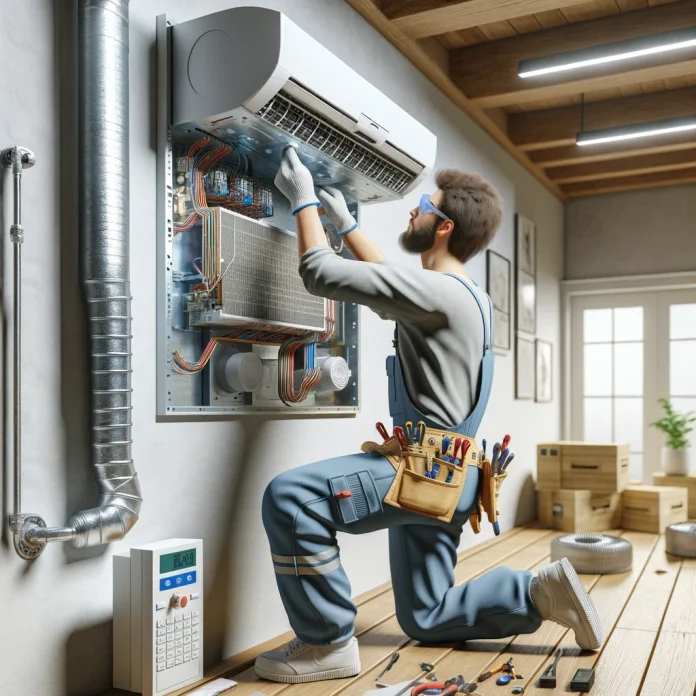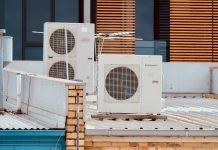HVAC design plays a crucial role in ensuring comfortable, healthy, and energy-efficient indoor environments. Whether for residential, commercial, or industrial spaces, a well-thought-out HVAC system optimizes temperature control, air quality, and energy consumption. This article delves into the fundamentals of HVAC design, key components, design considerations, and modern advancements shaping the industry.
Understanding HVAC Design
HVAC (Heating, Ventilation, and Air Conditioning) design is the process of planning and implementing systems that regulate indoor temperature, humidity, and air quality. It involves selecting the right equipment, ductwork, controls, and insulation to ensure efficient operation. Proper HVAC design enhances comfort, reduces energy costs, and meets building codes and environmental standards.
Key Components of HVAC Systems
A well-designed HVAC system comprises several essential components, each playing a vital role in maintaining indoor comfort:
1. Heating Systems
- Furnaces: Use gas, electricity, or oil to generate heat.
- Boilers: Heat water or steam for distribution via radiators or underfloor heating.
- Heat Pumps: Provide both heating and cooling by transferring heat from one place to another.
2. Ventilation Systems
- Natural Ventilation: Utilizes windows, vents, and other openings to promote airflow.
- Mechanical Ventilation: Employs fans, ducts, and air handlers to maintain consistent air exchange.
- Air Filtration: Includes HEPA filters, electrostatic filters, and UV purifiers to enhance air quality.
3. Cooling Systems
- Air Conditioners: Use refrigerants to absorb and release heat, cooling indoor spaces.
- Chillers: Provide large-scale cooling for commercial and industrial buildings.
- Evaporative Coolers: Use water to cool air, ideal for dry climates.
4. Control Systems
- Thermostats: Regulate temperature settings for optimal performance.
- Smart HVAC Controls: Automated systems with sensors, AI, and IoT integration for efficiency.
- Zoning Systems: Allow different temperature settings in various areas of a building.
Factors Influencing HVAC Design
Several factors must be considered when designing an HVAC system to ensure efficiency, cost-effectiveness, and comfort.
1. Building Size and Layout
The size, orientation, and insulation of a building impact HVAC system capacity and efficiency. Large buildings may require zoning systems to manage temperature variations effectively.
2. Climate and Environmental Conditions
Local climate conditions dictate HVAC design choices. For example, humid regions require effective dehumidification, while colder climates need robust heating solutions.
3. Energy Efficiency and Sustainability
Modern HVAC design emphasizes energy-efficient solutions such as high-efficiency heat pumps, variable refrigerant flow (VRF) systems, and renewable energy integration (e.g., solar-powered HVAC units).
4. Indoor Air Quality (IAQ)
A well-designed HVAC system ensures proper ventilation, humidity control, and air filtration to minimize pollutants, allergens, and airborne contaminants.
5. Regulatory Compliance
HVAC designs must adhere to building codes, energy efficiency standards (such as LEED or ASHRAE guidelines), and safety regulations.
Advancements in HVAC Design
The HVAC industry is continuously evolving, with innovative technologies improving system performance and energy savings.
1. Smart HVAC Systems
AI-driven HVAC solutions analyze data, predict usage patterns, and adjust settings automatically, reducing energy waste and enhancing comfort.
2. Geothermal Heating and Cooling
Geothermal systems utilize the Earth’s stable underground temperatures for efficient heating and cooling, significantly lowering energy consumption.
3. Ductless Mini-Split Systems
These systems eliminate the need for extensive ductwork, making them ideal for retrofits and buildings with limited space.
4. Energy Recovery Ventilation (ERV)
ERV systems capture and reuse energy from exhaust air, improving overall efficiency and reducing HVAC operating costs.
Conclusion
Effective HVAC design is essential for maintaining indoor comfort, improving energy efficiency, and ensuring environmental sustainability. By considering factors such as building layout, climate, and air quality, designers can create systems that optimize performance while minimizing costs. As technology advances, innovations such as smart controls, geothermal solutions, and energy recovery systems will continue to shape the future of HVAC design.










